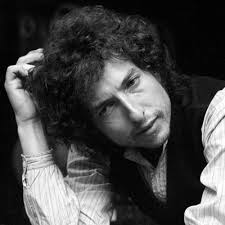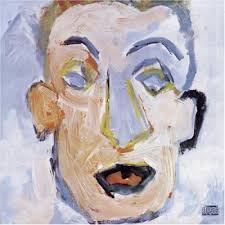Self Portrait
| Bob DylanSelf Portrait
Self Portrait is the 10th studio album by American singer-songwriter Bob Dylan, released on June 8, 1970, by Columbia Records. Self Portrait was Dylan's second double album (after Blonde on Blonde), and features many cover versions of well-known pop and folk songs. Also included are a handful of instrumentals and original compositions. Most of the album is sung in the affected country crooning voice that Dylan had introduced a year earlier on Nashville Skyline. Seen by some as intentionally surreal and even satirical at times, Self Portrait received extremely poor reviews upon release; . . . .-Wikipedia
Critic Reviews
Show All-
 Rolling Stone
Rolling Stone
a bizarre mishmash of pop covers (Simon and Garfunkel’s “The Boxer”), pre-rock hits (“Blue Moon”) and poorly recorded live cuts from Dylan’s 1969 set at the Isle of Wight Festival. Nearly every tune is overloaded with backup choirs, strings and horns.
-
 Rolling Stone
Rolling Stone
1970. By its title alone Self-Portrait makes claims for itself as the definitive Dylan album – which it may be, in a sad way – but it is still something like an attempt to delude the public into thinking they are getting more than they are, or that Self-Portrait is more than it is.
-
 Vanity Fair
Vanity Fair
What it was was a grab bag: covers of traditional country and folk tunes and songs by some of Dylan’s more-or-less contemporaries, including Paul Simon and Gordon Lightfoot, plus a few originals and several more revamped versions of older Dylan songs, including “Like a Rolling Stone,” from a 1969 concert with the Band.
-
 All Music
All Music
a deliberately sprawling affair that runs the gamut from self-portrait to self-parody, touching on operatic pop, rowdy Basement Tapes leftovers, slight whimsy, and covers of wannabe Dylans from Paul Simon to Gordon Lightfoot.
-
 NME
NME
In a way ‘Self Portrait’ is seen as Bob Dylan’s “write the theme tune, sing the theme tune moment”. Because while a Dylan trying to shake his voice-of-the-generation tag might have been shocking just months after the 60s ended, a Dylan creating modern Americana folk sounds a lot like the one who today records similarly folklore-infused albums likes ‘Modern Times’ or ‘Love & Theft’.
-
 National Public Radio
National Public Radio
2013. In this context, the double-album Self-Portrait arrived in 1970 with a resounding, moist flop. I don't mean it was a commercial flop; it sold well. But, with its diffident-sounding vocals and some mawkish string arrangements, Self Portrait just did not fit in with its era, with its moment in pop culture, and in Dylan history. In retrospect, that seems to have been Dylan's intent.
-
 The Guardian
The Guardian
2013. Self Portrait, though, is rather different: this was a deliberately bad record, apparently created to distance its creator from his public, and earn him some peace and quiet. "The reason that album was put out [was] so people would just at that time stop buying my records, and they did," Dylan later reflected.
-
 Diffuser
Diffuser
2015. Forty-five years later, Self Portrait may not be as essential as Highway 61 Revisited, but it's an important album nonetheless. Self Portrait captures a young man who is pushing back against market forces and unrealistic expectations, which spiritually if not aurally makes it one of the definitive albums in the Dylan discography.
-
 The Current
The Current
Self Portrait is my favorite Bob Dylan mixtape: an erratic mish-mash of leftover country ballads from Nashville Skyline, little gospel ditties that seem to foreshadow his work that would come in the 80s, a funky “Woogie Boogie” that would have fit in with what was happening on the West Bank of the Twin Cities in 1970, and even a Simon & Garfunkel cover.
-
 Wilson & Alroy's Record Reviews
Wilson & Alroy's Record Reviews
his record was slammed on release, and I figured the critics must've been exaggerating. But there's almost nothing (except for a few examples of his nicotine-free singing voice) to recommend this record: there aren't many originals, and most of them are almost comically clichéd ("Living The Blues").(DBW)
-
 New Zealand Electronic Text Collection Victoria University
New Zealand Electronic Text Collection Victoria University
1970. It's the overall impression that really counts, not so much the individual songs, for it's Dylan presenting a collection of songs that mean and have meant something to him.
-
 HIFIZINE
HIFIZINE
2011. In sum, as long as you aren’t expecting the “voice of the prophet” to issue from your loudspeakers, you may discover that Self Portrait is, in many ways, a likeable album and one worth adding to the collection, particularly in this high-quality vinyl format.
-
 itunes Apple Music
itunes Apple Music
On this double album dominated by covers, he brings his Nashville Skyline croon to traditional folk (“Little Sadie"), ‘50s rock ‘n’ roll (The Everly Brothers’ “Take a Message to Mary”), and tunes by his contemporaries (Gordon Lightfoot’s “Early Morning Rain”),
-
 The International Review Of Music
The International Review Of Music
2009. “Self-Portrait” is probably the most fascinating release by a major artist in the history of music, a perversely misanthropic, fanbase-alienating, contemptuous flip of the bird to all who’d ever had the gall to put this or any other artist on a pedestal.
-
 Robert Christgau
Robert Christgau
The singing is not consistently good, though it has its moments, and the production--for which I blame Bob Johnston, though Dylan has to be listed as a coconspirator--ranges from indifferent to awful. It is possible to use strings and soprano choruses well, but Johnston has never demonstrated the knack
-
 Mark Prindle
Mark Prindle
There's twenty- four songs on this double album, and about eighteen of them rank up there with the most underwritten, crappily-arranged, and lousily-performed songs in Dylan's history.
-
 Countdown Kid
Countdown Kid
2013. Only Bob Dylan can tell you his exact motivation for 1970’s Self Portrait, a double-album collection of odds and sods so bizarrely random and maddeningly inconsistent that even his most ardent supporters were left scratching their heads. It still mystifies and intrigues to this day.
-
 George Starostin's Reviews
George Starostin's Reviews
A terribly understated quiet, modest album. Groovy and utterly un-serious. Remember that.
-
 The Young Folks
The Young Folks
2015. Dylan entered the 1970s with Self Portrait, an album that hasn’t stood the test of time at all and is often thought of as one of the worst albums ever recorded by a great artist.
-
 Phoenix New Times
Phoenix New Times
2013 Sorry, Bob Dylan's Self Portrait is still a bad album.
-
 Electric Review
Electric Review
2013. this was a “self portrait” — a statement about the artist setting out to rediscover the secret soul of himself.
-
 Adrian Denning
Adrian Denning
2013. A multi-faceted character and personality!! Nothing is indeed as straight-forward as it seems.
-
 Rilaly
Rilaly
2016. I believe it was a mechanism he used to inform the world that their attempts to pour salt in the wound did not affect him, and that Self-Portrait was nothing more than a pre-emptive attack against those that would attack him for revealing his more vulnerable side.
-
 Counter Punch
Counter Punch
2013. Instead of new original masterpieces, Self Portrait was primarily a collection of covers: folk songs, country-western tunes from the ’50s and ’60s, songs by other contemporary writers, a couple of Everly Brothers classics, a pop tune and six new originals.
-
 Dan Miraldi
Dan Miraldi
2013. It was a capricious collection of rather sloppy covers of current popular folk songs, traditional folk ballads, as well as 1950s rock and roll tunes overlaid with gaudy string arrangements and lastly, loose live recordings from his performance at the 1969 Isle of Wight Festival (including a version of “Like A Rolling Stone” where Dylan stumbles over the lyrics).
-
 The Inquirer Daily News Phily
The Inquirer Daily News Phily
2013. Then, now and always, Dylan has had multiples selves to choose from in presenting himself to his public. With the original Self Portrait he picked one that jarred true believers, which was surely part of his intention. That album seems even stranger in retrospect, considering how much superior material he was sitting on and chose not to release.
-
 Chronicles of Times
Chronicles of Times
2011. Bob Dylan‘s Self Portrait is one album that seriously oozes with cool and swagger, and has stood the test of time as a great album; relevant even today.
-
 Your Vinyl Cousin
Your Vinyl Cousin
2010. In fact, 1970’s Self Portrait — a double album of sloppy originals, clumsily read covers of Gordon Lightfoot and Simon & Garfunkel, live cuts from a ramshackle Isle of Wight performance with The Band, and a couple silly instrumentals for good measure — probably stands as the most egregious offender.
-
 Bobdylan.nu is an unofficial side of Bob Dylan who started spring 2010 (Swedish)
Bobdylan.nu is an unofficial side of Bob Dylan who started spring 2010 (Swedish)
Just as it is one of Bob Dylan's most important discs, it's a must for every fan since it contains many songs of value and is also a document of what music inspired Dylan himself.



Rate This Album and Leave Your Comments